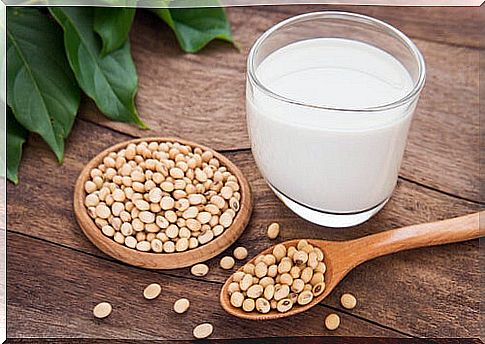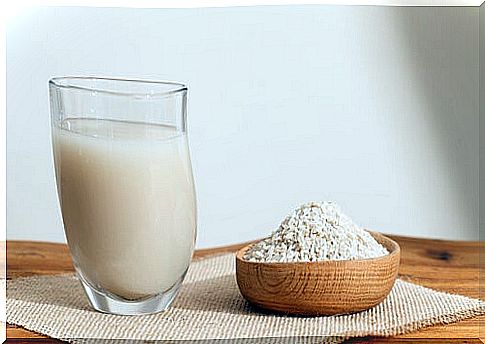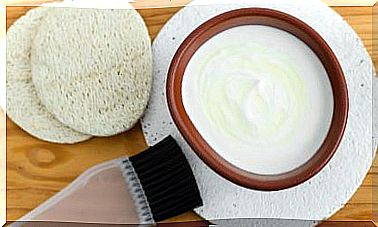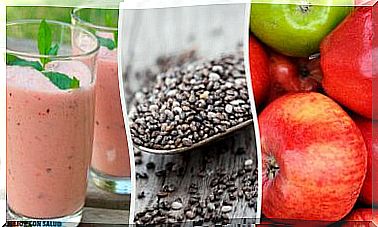Healthy Alternatives For Lactose Intolerant
Although there are different degrees of lactose intolerance, it is always recommended, especially if ours is very marked, to substitute cow’s milk for vegetable options.

More and more people are not consuming dairy for health reasons. Perhaps for some it is a fad, but the truth is that the symptoms of lactose intolerance can be very annoying. In the next article we will tell you about some healthy alternatives.
Keep in mind that, if you have not been correctly diagnosed with this problem, you should not remove lactose from the diet. Otherwise, inefficiencies in lactase production could be created in the medium term.
What is lactose intolerance?

Basically it is a disorder that occurs after ingesting milk sugar (lactose) by not having enough lactase (the enzyme responsible for digesting this compound). Poor absorption causes gas, bloating, diarrhea, vomiting, or constipation.
The consumption of dairy does not damage the gastrointestinal tract of those affected: the symptoms are transient and end after a couple of hours (depending on the amount that has been ingested).
There are different degrees of lactose intolerance:
- Some patients can drink a cup of milk without experiencing symptoms.
- Others must substitute dairy for other options.
- There are those with a more severe deficiency as a result of other diseases (such as celiac disease, gastrointestinal infection, or Crohn’s disease).
How to recognize if I am lactose intolerant

This is a very common question and, although it is advisable to go to the doctor for the diagnosis, we can also analyze certain symptoms or discomforts that are suffered after consuming milk or dairy products to get an idea.
- Pain, gas, bloating or diarrhea appear after ingesting a cup of milk, a portion of ice cream or a plate containing cream.
- It is even possible to be allergic to products derived from the cow and not from another mammal (for example, the goat) due to the use of certain hormones or products for conservation or processing.
- It is also important to be aware of which foods are causing the symptoms. Maybe it’s just the milk (especially whole milk) or cheese.
Pay close attention to what we eat and what consequences it entails.
- It is also essential to check the labels of the products we buy in the market. Many may contain lactose and we may not know it.
- Finally, it is recommended to eat a balanced and healthy diet to cover the calcium or vitamin D deficiencies that we do not obtain by avoiding dairy consumption. Both elements have been shown to be essential to ensure good bone health.
Among the suitable foods we find green leafy vegetables, blue fish (such as salmon), nuts and legumes.
Healthy alternatives for lactose intolerant
We can get some of them in stores or in the supermarket, but others are better to prepare ourselves. The best alternatives if we suffer from lactose intolerance are:
Lactose-free (or lactose-free) milk
It allows you to continue consuming milk without suffering from the annoying symptoms. In addition, it is obtained without problems in the markets. Although it is prepared from cow’s milk (with its corresponding nutrients and proteins), the lactose is extracted.
Soy milk

It is the second best known and most popular option among lactose intolerant people because it is also easy to get. We can also buy it with different flavors: chocolate, vanilla, strawberry, etc.
It is important to know the origin of soy and avoid those products that come from transgenic agriculture. In addition, we will consult with the doctor about its consumption, since, if consumed in excess, it can affect the hormonal balance.
You also have to avoid those varieties that have added sugar inside. This element is capable of causing damage to the body when consumed chronically in large quantities, according to a study published in the Journal of Hepatology.
Almond milk
It is the most common among vegetable milks. Packed with protein and nutrients, it ‘s a wonderful option for vegans, for example. Many mothers choose to give their children almond milk to avoid the chemical compounds currently added to cow’s milk.
It should be noted that this product has certain minerals, such as zinc, which are essential to ensure the proper functioning of the immune system. This is evidenced by research published in Nutrients .
Slightly sweet in flavor, almond milk is very easy to prepare at home.
Ingredients
- 1 cup of almonds (155 g).
- 3 cups of water (750 ml).
- 1 tablespoon of honey (25 g).
- 1 teaspoon of vanilla extract (5 g).
- Optional: cinnamon or cocoa powder.
Preparation
- Place the almonds in a container and add water until they are completely covered.
- Soak overnight.
- In the morning, strain and rinse with cold water.
- Pour into the blender glass with 3 cups of water.
- Blend at maximum speed, until you get a kind of frothy cream.
- Using a cloth strainer (like the ones used to make coffee), filter the preparation.
- Add the honey and the vanilla essence to the resulting liquid.
- Take to the fridge and enjoy when you want.
- The pulp of the almonds can be saved for other recipes (both sweet and savory).
Rice milk

Another healthy alternative for those who cannot consume cow’s milk. It is not recommended if we suffer from constipation, but it is recommended in cases of diarrhea.
It is also very easy to prepare at home.
Ingredients
- 1 cup of rice (185 g).
- 8 cups of water (2 liters).
- 1 tablespoon of sunflower oil (16 g).
- 1 tablespoon of sweetener (honey, cocoa, vanilla, cinnamon, brown sugar) (optional).
Preparation
- Wash the rice and let it soak in plenty of water for a couple of hours.
- Filter, rinse and place in a saucepan with the 2 liters of water.
- Cook until tender (about 20 minutes maximum).
- Add the oil and the sweetener. Remove from heat.
- When it has cooled a bit, pour into the blender and blend.
- Remove unprocessed fragments with the help of a cloth strainer.
Experience the alternatives to milk for the intolerant
Other natural options for lactose intolerant are oatmeal, hazelnut and quinoa milks. And all of them can be prepared in your own kitchen! What are you waiting for to investigate more?









